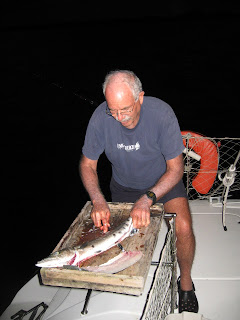Short News
Guatemala volcano eruption 2010 apparently began at approximately 7 PM local time on May 5.
The rain of black sand has reached a depth of approximately 10 centimeters (4 inches) in many areas near Pacaya volcanic, causing residents of at least four nearby villages to evacuate. The Pacaya volcano is approximately 6,000 feet in height above seawater.
The residents of Guatemala City have been shoveling black sand out of their driveways for days now. The city slowly returns to normal. After the deluge of tropical storm Agatha, the sun has returned and dry sand now floats in the air as fine dust.

Few realize this black sand has had a profound influence on the history of Guatemala as a maker of fortunes and misery, economic development and war. It has been a source of employment, taxes and wages but also of economic dependency, inequality and suffering. It is beauty and ugliness, past and future.
33 Volcanoes are lined up on the Pacific coast in Guatemala from Mexico to El Salvador.
They are the origin of the fertile coastal slopes and plains, which are covered in deep fertile soil of volcanic origin, produced be eruptions and erosion.
During the heyday of the Maya, the region was covered in dense jungle and , curiously , of no particular interest to the Maya. Rather, they populated the lowlands on the Atlantic side of Guatemala, Mexico and Honduras and the central highland regions.
The Spanish conquistadors also passed this fertile region by in their quest for gold and the dominance of the Maya. They should have looked closer to find the real treasure of this country!
With the advent of large scale export oriented farming, the volcanic soil became a source of great wealth for the planters of these commodities and the country. However, it also cemented feudal structures which kept a large contingent of cheap labor available for work on the plantations through legal or economic coercion.

COFFEE was introduced into Guatemala around 1750 and grew as an ornamental plant in the Jesuit gardens in Antigua Guatemala. By the beginning of the 19th century it had spread to many regions of Guatemala, especially the fertile slopes of the volcanoes on the Pacific side.
SUGAR came to Guatemala from the Caribbean in colonial times and is now the agricultural mainstay of Guatemala. It prospers in the black sand of Guatemala.
King COTTON prospered here fore some decades until it was driven out by rising cost, labor unrest and pesticide resistance.
 AFRICAN PALM and CATTLE succeeded cotton to thrive here.
AFRICAN PALM and CATTLE succeeded cotton to thrive here.
BANANAS were cultivated on that soil by the United Fruit Company.This 1909 map published by the United Fruit Company shows the route of the IRCA, the International Railroad of Central America, owned by UFCO and one of the causes of the dispute with Guatemalan which led to a CIA-backed coup against the Guatemalan government.

Recently minerologists are looking at our black sand. The shining particles one sees when walking on the black beaches turned out to be gold, but extraction is , as yet, uneconomical.
Iron Sands Americas Ltd. is exploring the possibility of extracting iron from the black sand.
The titanomagnetite iron sands span the entire coastline, - the result of the volcanic residue that continues to be carried down by the river systems and deposited on the planes, beaches and into the ocean.

Black Sand incorporates the vitality of Guatemala, the possibility of a better future for many, of a better life for the poor.
Please help organizations like Ak´Tenamit, who are making a difference by educating poor youngsters to become leaders in their communities and turn black sand into well-being for many.
The Trans America ride
is a small effort to help transform the lives of poor Maya children. During my trip I will speak about the importance of educational projects like Ak Tenamit, and especially girl´s education, and its connection to illegal immigration in the United States.
YOU CAN PARTICIPATE IN THE TRANS AMERICA RIDE!!
The target of the ride is to raise $10.00 for each mile of the ride.
I you decide to support this ride, you may:
1. Buy miles: Buy one or more miles at $10.00 per mile. There are
2. Sponsor a local event when I am in your area (a ride, a barbecue) for a $200.00 minimum.
3. Become a Student Sponsor at Ak´Tenamit for $30.00 (one month) or $360.00 per year
4. Become a Health Care Partner for $10.00 or $120.00 per year.
All funds should end up in the
If you would like to sponsor a child, become a Health Care partner or simply want to buy one of the
Tick the box ¨Trans
If you prefer to not to use a credit card, just see Chapter 5 of this Blog on how to donate.
JEAN , THE RIDING DUTCHMAN
transamerica.tenamit@gmail.com




































